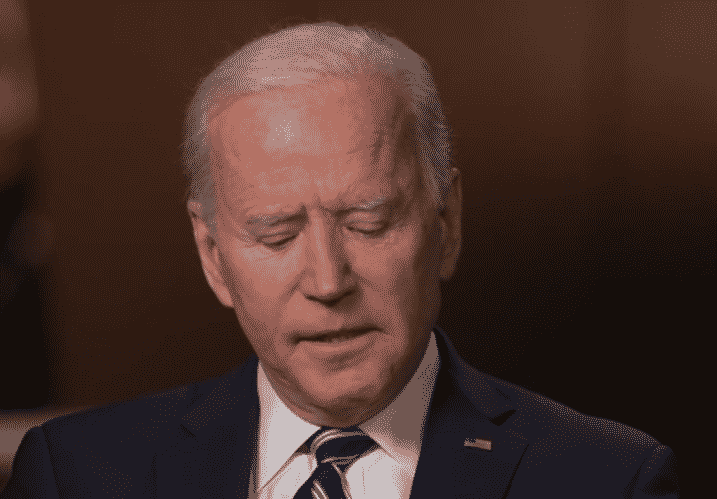How much of the Constitution and individual liberty will remain by the time a competitive two-party system is rebuilt? It’s up to Senators Manchin, Sinema and others to make sure we never find out.

On March 16, President Joe Biden opened the door to changing Senate rules requiring 60 votes in order to advance legislation, telling ABC News’ George Stephanopoulos “democracy is having a hard time functioning.”
When asked if he had to choose between “preserving the filibuster, and advancing your agenda,” Biden’s answer was “Yes.”
Biden continued, “But here’s the choice: I don’t think that you have to eliminate the filibuster, you have to do it what it used to be when I first got to the Senate back in the old days…You had to stand up and command the floor, you had to keep talking.”
In 2020, Biden ran on a platform of enacting a public option for health insurance, raising taxes, moving to net-zero carbon emissions in energy production by 2035 and by 2050 for everything else including transportation, legalizing millions of illegal immigrants including a pathway to citizenship, passing his $1.9 trillion Covid stimulus relief legislation and election law reform.
Now, some of those things, like the stimulus and raising taxes, will be done under budget reconciliation that only requires a 50-vote threshold in the U.S. Senate, and carbon emissions regulation can be dealt with largely via regulation if Biden sets his sights lower.
But on the bigger ticket items on socialized medicine, a more expansive Green New Deal, granting citizenship to millions of illegal aliens and the H.R.1 election nationalization legislation, however, would need to go through Congress. And, under current Senate rules, need a 60-vote threshold to pass and make permanent changes to law.
Other items, like increasing the number justices on the Supreme Court or granting statehood to the District of Columbia and Puerto Rico, would similarly need to be passed legislatively, all with 60-vote thresholds.
So, with the Senate split 50 to 50, the Democratic agenda is more or less at a standstill — and there is a diminishing window of opportunity to get anything done.
And in midterm elections from 1906 to 2018, the party that occupies the White House usually loses on average 31 seats in the House, and about three seats in the Senate. And with just a 10-seat majority in the House and a 50-50 tie in the Senate, there is a very high likelihood Democrats will lose one or both chambers in 2022.
Meaning, it’s now or never on the filibuster.
So far, however, Senators Joe Manchin (D-W.Va.) and Kirsten Sinema (D-Ariz.) appear opposed. “I will not vote in this Congress, that’s two years, right? I will not vote [to abolish the filibuster] And I hope with that guarantee in place he will work in a much more amicable way,” Manchin said in an interview in January. Sinema for her part through her office said she is “not open to changing her mind.”
But that was before Biden chimed in. Now, pressure will mount on Manchin, Sinema and other Senate Democrats to radically alter the way legislation is passed.
The upside for Democrats is significant long-term. If they focus their initial energies simply on the H.R. 1 election reform legislation and granting citizenship to millions of illegal immigrants, they will attempt to cement a generational electoral majority closely resembling the New Deal coalition that held from 1932 to 1952, where Democrats could pass anything they wanted.
It was one-party rule for close to two decades, except for a brief window in 1946 when Republicans reclaimed the House and the Senate, only to lose them promptly in 1948.
H.R. 1 would require states to automatically register residents to vote at Departments of Motor Vehicles, turn the Federal Election Commission into a partisan entity controlled by the White House party, dramatically change Congressional redistricting, require the use of absentee ballot drop boxes, eliminate state restrictions on mail-in voting, require same-day voter registration and gut state voter identification laws.
When automatic registration is combined with mailing out millions of ballots for mail-in voting, along with granting citizenship to a reported 12 million illegal aliens, who are predominantly Hispanic, and Democrats would have a virtual long-term lock on both houses of Congress and the presidency for a very long time. Democrats won Latinos 65 percent to 32 percent in 2020, according to the CNN exit polls. Republicans have no offset in legal immigration that compares, and so it’s just a numbers game.
Throw in four more Democratic senators for D.C. and Puerto Rico, plus reallocating six representatives to the new states, and GOP prospects in Congress drop somewhat.
Now, even then that might not even be enough for Democrats to win the 2022 midterms in the House, but long term, this will make 2024 and future national elections much, much harder for Republicans to win.
It would be one-party rule for a long, long time.
Now, such majorities would not last forever — they never do. But by the time the GOP gets fully back in power, the U.S. would look dramatically different from what it does today. A lot of damage will have been done by then: a packed Supreme Court, the Green New Deal, socialized medicine, universal income and so on.
How much of the Constitution and individual liberty will remain by the time a competitive two-party system is rebuilt? It’s up to Senators Manchin, Sinema and others to make sure we never find out.
Robert Romano is the Vice President of Public Policy at Americans for Limited Government.






